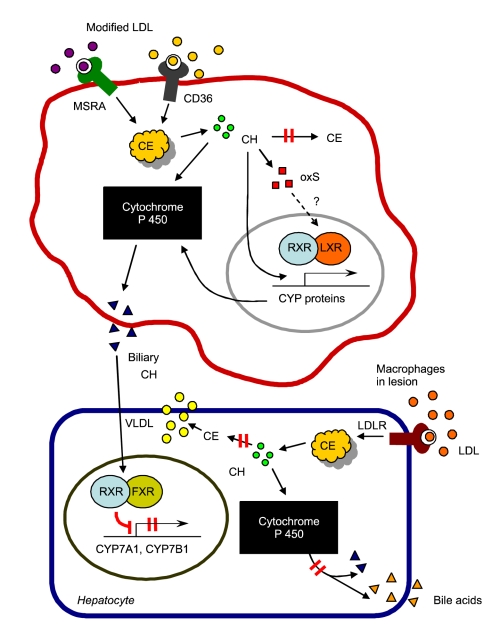Figure 7.
Schematic presentation of hypothesis proposed in this paper. In lesion-macrophages, unregulated cholesterol influx from modified LDL activates ACAT-1 and leads to formation of large amounts of intracellular CE. Inhibition of ACAT enhances the pool of free cholesterol available for conversion into oxysterol, thus LXRα signaling might be activated by oxysterol. ACAT inhibition induce cytochrome P450 proteins in acLDL-loaded macrophages, and thus the cells were rendered resistant to accumulation of cholesterol by increased catabolism to BC, which is immediately secreted out of the extracellular space. In liver cells, BC could be a ligand of FXR, which represses the expression of the enzymes involved in bile acid synthesis, including CYP7A1 and CYP7B1. Finally, ACAT inhibition could repress bile acid synthesis in hepatocytes and cholesterol excretion from the body via the activation of FXR. CH: cholesterol, CE: cholesteryl ester, oxS: oxysterol, BC: biliary cholesterol.

